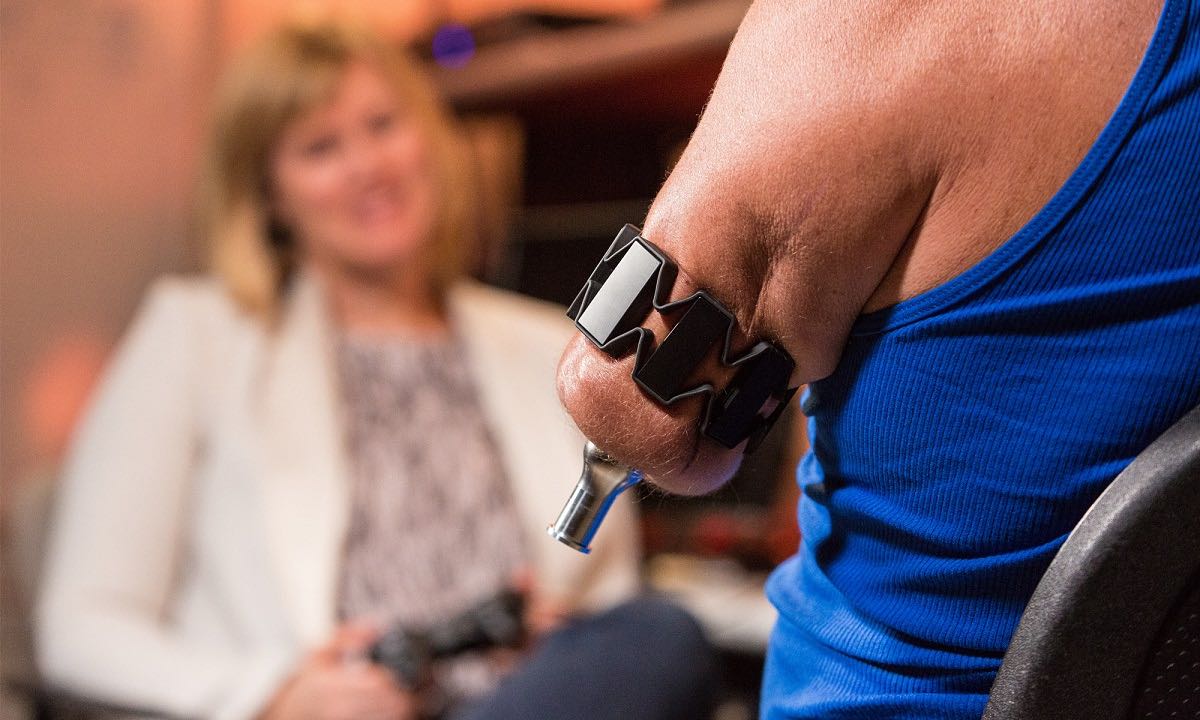

It has been projected that more than 2.2 million Americans will be living with limb loss in 2020.* Jonathan Forsberg, associate professor of orthopaedic surgery in the Johns Hopkins Division of Orthopaedic Oncology, is helping to introduce alternative types of prostheses for these patients.
Forsberg’s current research focuses on osseointegrated implants, which attach directly to the residual limb’s bone, eliminating the need for traditional, socket-based prostheses. “Our soft tissues were not meant to bear weight,” Forsberg says, noting the shortcomings of traditional prostheses. “Patients can develop ulcerations, perspiration may disrupt the interface between skin and socket, and if the length of the residual limb is shorter, patients may have less control over the limb.” Osseointegration can greatly improve quality of life by “increasing the amount of time patients wear a prosthesis throughout the day and enabling osseoproprioception (knowing where the limb is without looking at it) and osseoperception (‘feeling’ the differences between surfaces),” says Forsberg.
Osseointegrated limbs can also accommodate advanced prosthetic components, such as the Johns Hopkins Applied Physics Laboratory’s Modular Prosthetic Limb, which uses pressure sensors embedded in the fingertips of the prosthetic hand to provide artificial sensory feedback.

“Osseointegration is a complex process that requires a long rehabilitation period and a multidisciplinary team, including orthopaedic and plastic surgeons, prosthetists, and rehabilitation and mental health specialists,” Forsberg explains. As a large, collaborative academic institution, Johns Hopkins can provide every aspect of the care needed for these patients. Education is particularly important, given that osseointegration patients have a lifelong risk of infection.
“Osseointegration as an orthopaedic field is still in its infancy,” Forsberg notes. “Several companies worldwide are developing osseointegrated implants, but only one of them has data beyond 10 years. Given the unique challenges, there are many areas that are ripe for research, such as the ideal patient population, ideal implant types for various bony anatomy, monitoring of bone health and the skin penetration site, and evaluating the ethics and costs associated with osseointegration.”
To address these questions, Johns Hopkins will participate in an international registry to collect inclusion criteria, surgical information and outcomes data on osseointegrated implants at institutions worldwide. The registry will also improve transparency in the field of osseointegration by helping to identify implant designs at risk for early failure. Participants will be able to respond to questions from the Food and Drug Administration, which was involved in registry development, and from other investigators, as the field moves from first-generation prostheses to subsequent iterations.
“Once we address the ideal patient population and ideal implant types,” Forsberg says, “we can turn our focus to other areas of research — in particular, deciding how best to convey the signals from the patient’s own nerves and muscles to a robotic limb. I’m very excited to continue to develop this project at Johns Hopkins.”
*Ziegler-Graham et al. Arch Phys Med Rehab. 2008;89(3):422–429
Published in Framework Fall 2019 and OrthopaedicSurgery Winter 2020.

